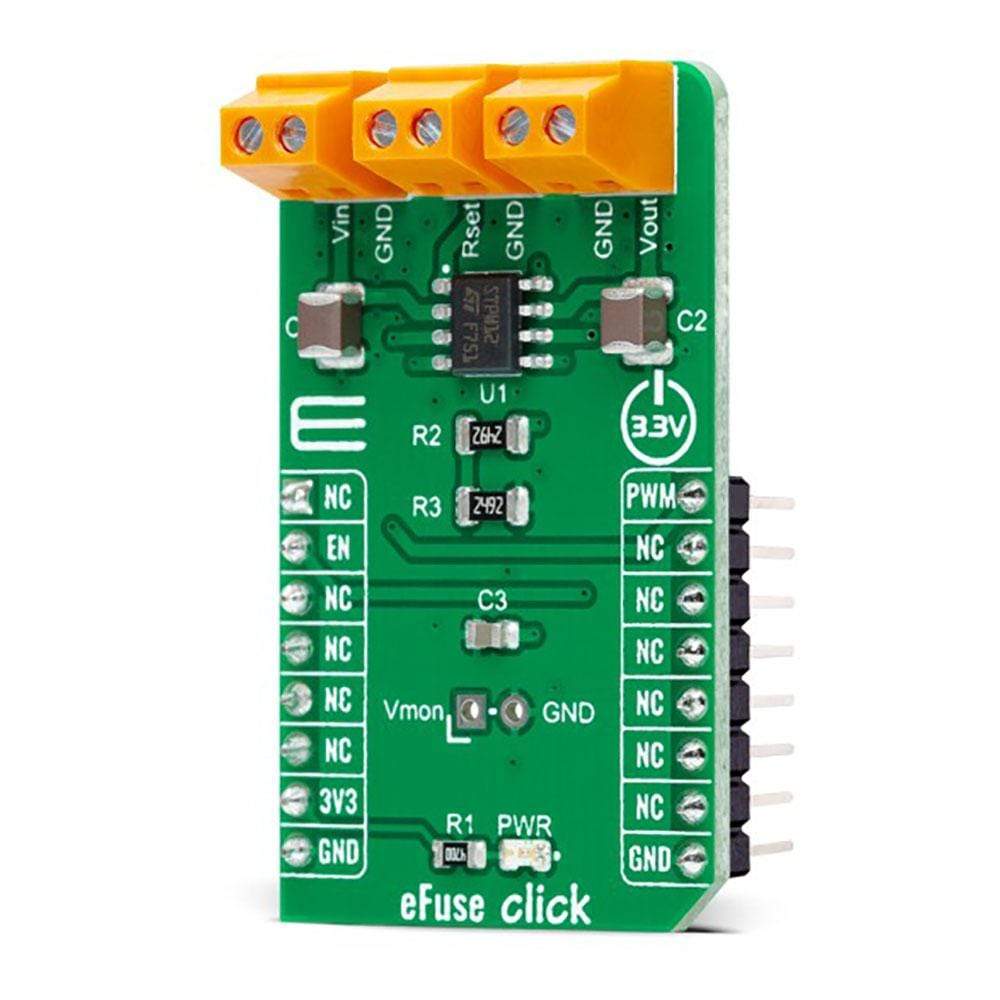
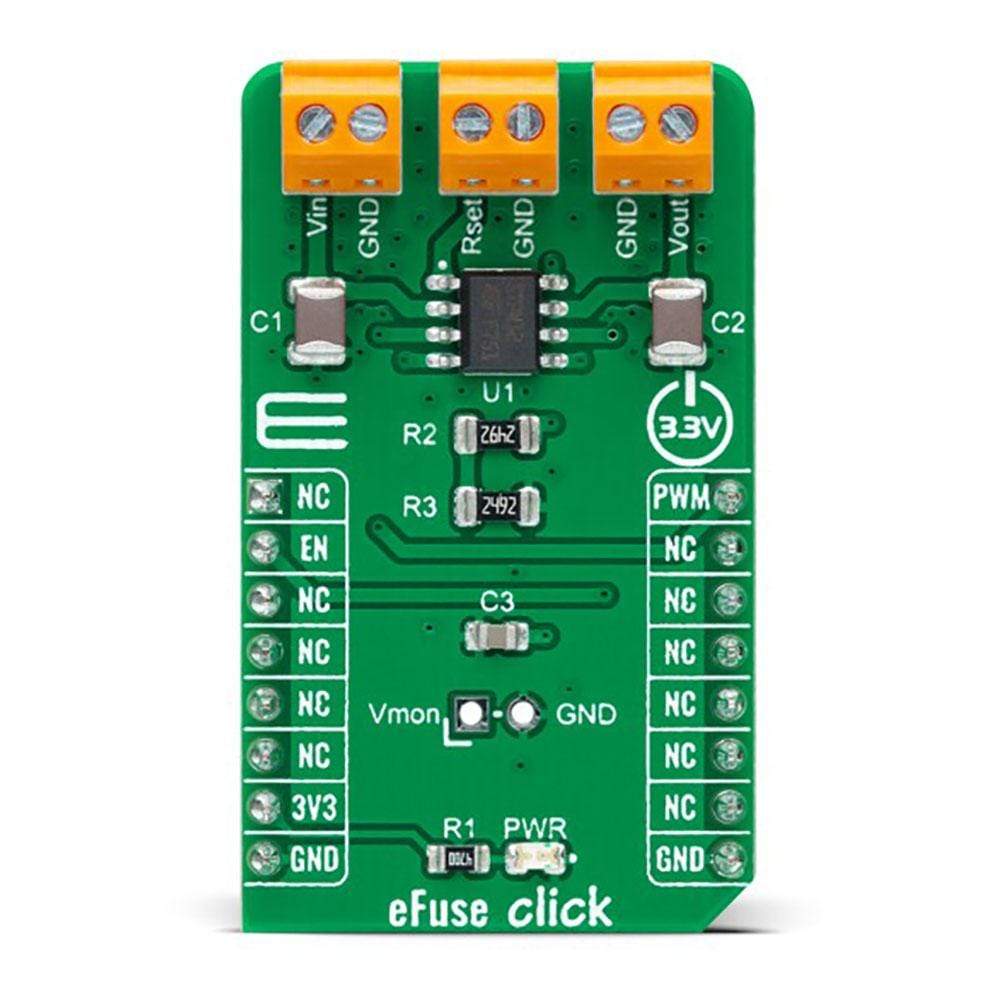
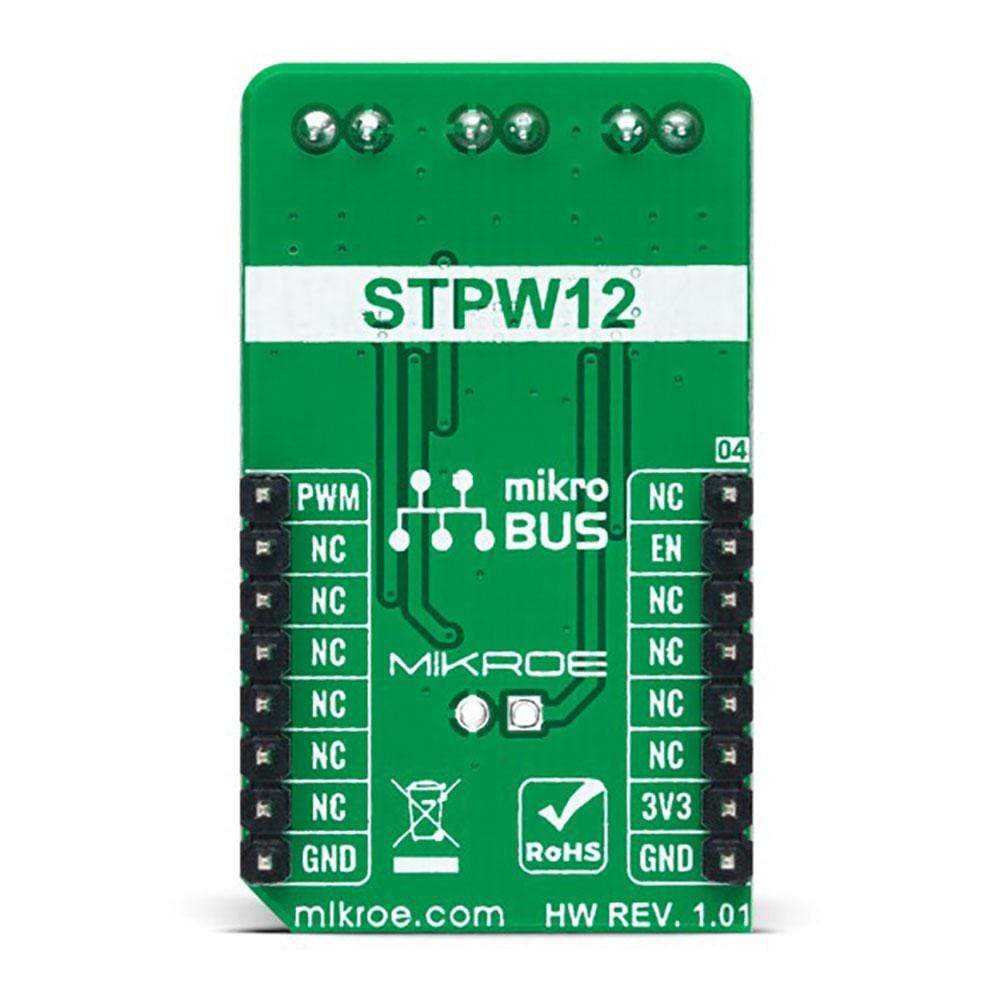
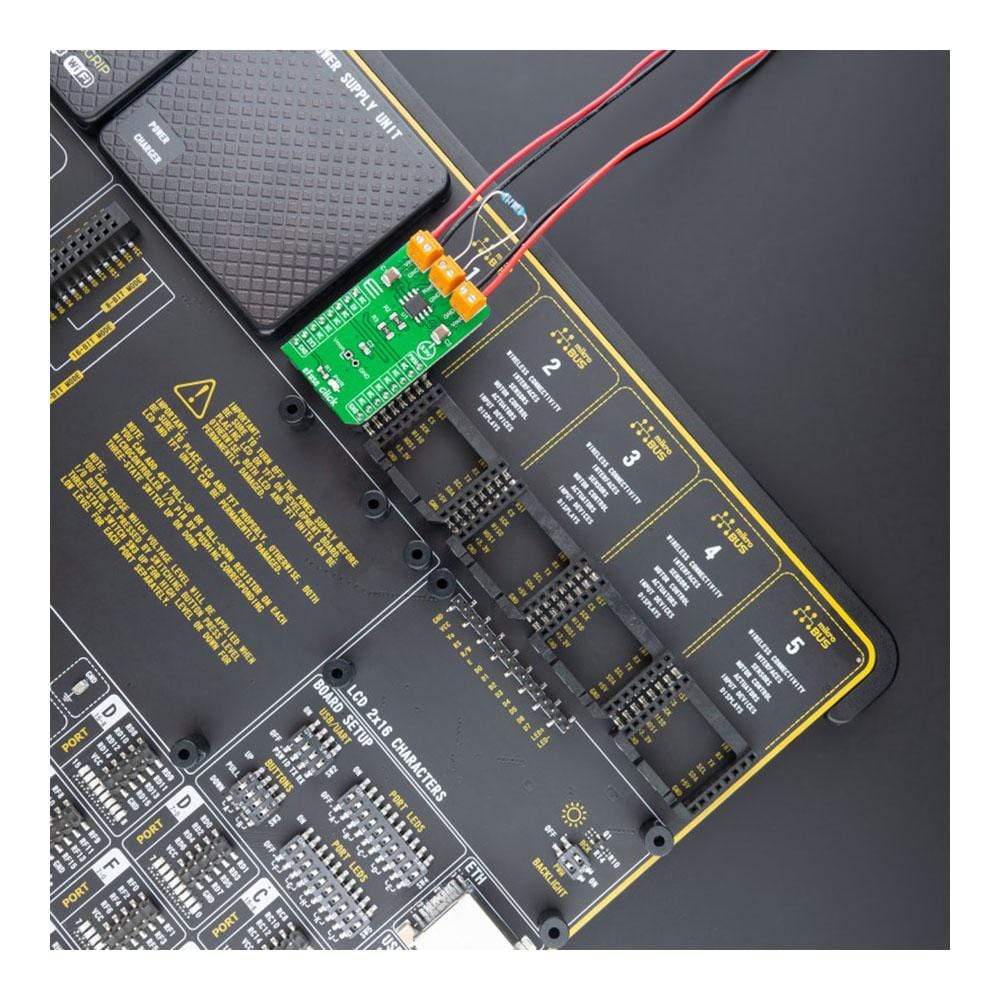
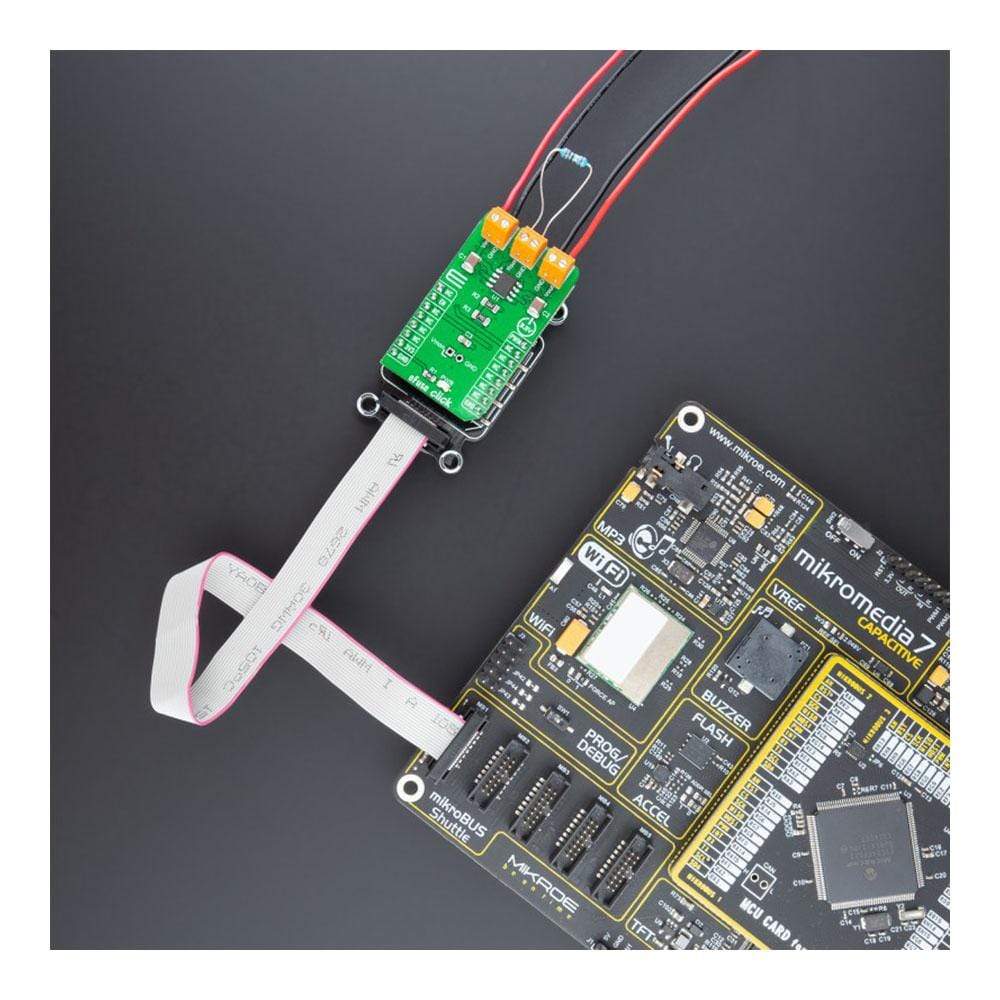
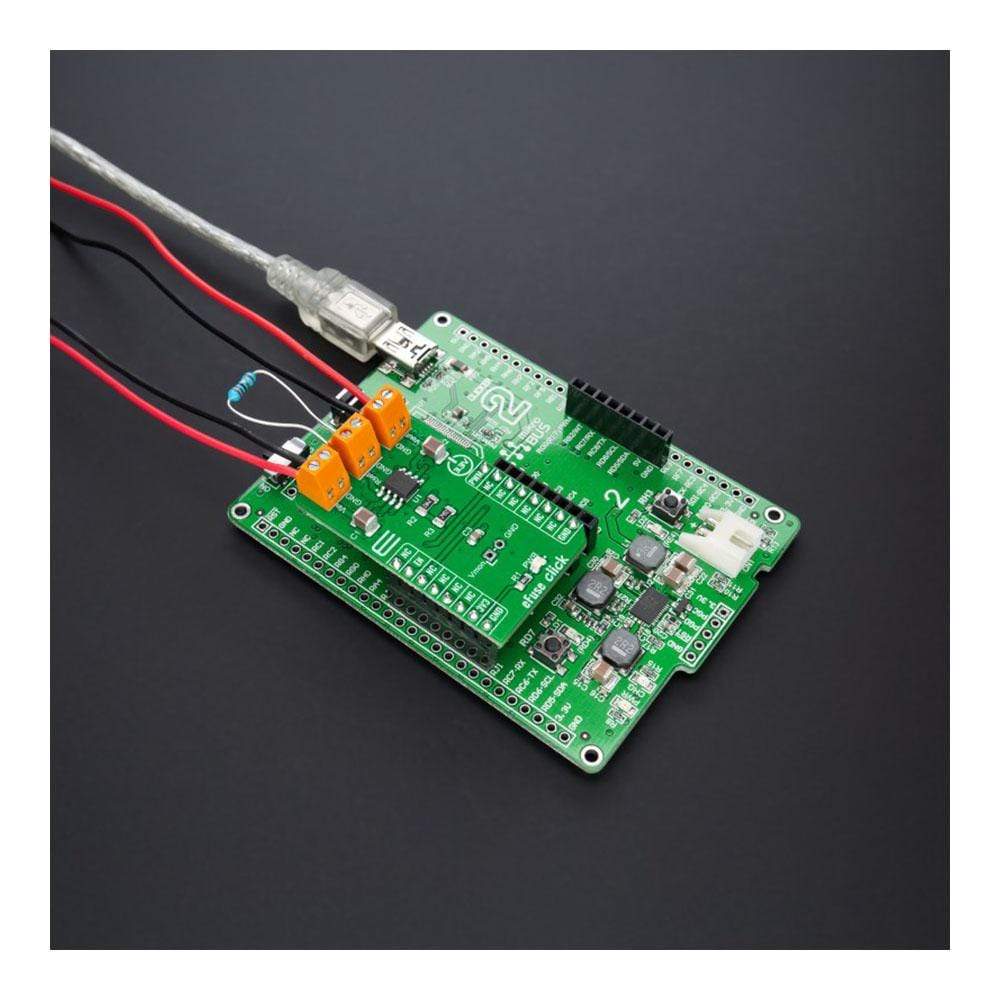
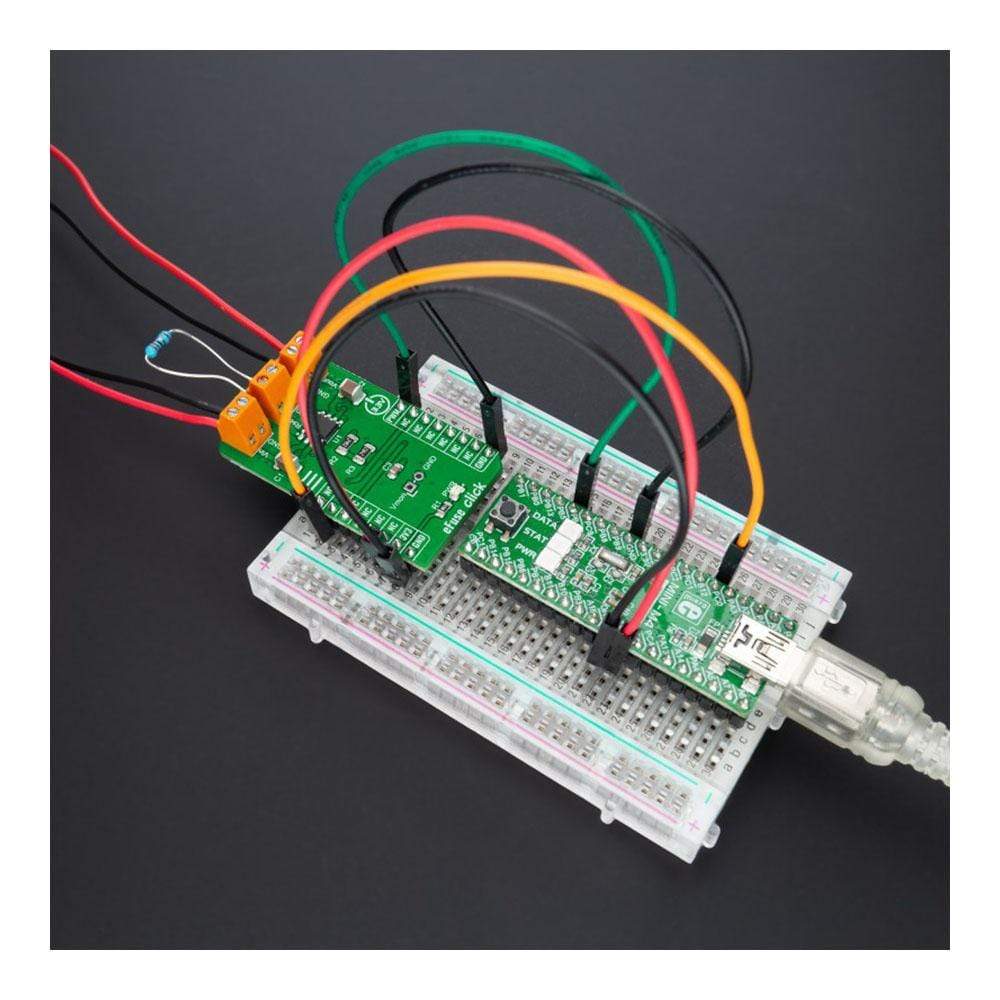
Overview
The eFuse Click Board™ is a compact add-on board that contains a programmable electronic power breaker. This board features the STPW12, an integrated electronic power breaker optimized to monitor the input power from STMicroelectronics. Connected in series to the power rail, it can disconnect the electronic circuitry on its output if the power consumption overcomes the programmed limit. The intervention of the protection is communicated to the MCU through a signal on the fault pin. The device can also be enabled/disabled through a dedicated Enable pin with a direct PWM mode, which can be achieved through an external PWM signal.
The eFuse Click Board™ is suitable for industrial and consumer applications, fault protection, overcurrent surge protection, and more
Downloads
Le Carte à clic eFuse™ est une carte complémentaire compacte qui contient un disjoncteur électronique programmable. Cette carte comprend le STPW12, un disjoncteur électronique intégré optimisé pour surveiller la puissance d'entrée de STMicroelectronics. Connecté en série au rail d'alimentation, il peut déconnecter le circuit électronique sur sa sortie si la consommation d'énergie dépasse la limite programmée. L'intervention de la protection est communiquée au MCU via un signal sur la broche de défaut. Le dispositif peut également être activé/désactivé via une broche d'activation dédiée avec un mode PWM direct, qui peut être obtenu via un signal PWM externe.
Le eFuse Click Board™ convient aux applications industrielles et grand public, à la protection contre les pannes, à la protection contre les surintensités, etc.
| General Information | |
|---|---|
Part Number (SKU) |
MIKROE-4726
|
Manufacturer |
|
| Physical and Mechanical | |
Weight |
0.02 kg
|
| Other | |
Country of Origin |
|
HS Code Customs Tariff code
|
|
EAN |
8606027383311
|
Warranty |
|
Frequently Asked Questions
Have a Question?
Be the first to ask a question about this.







